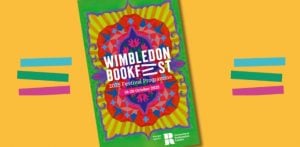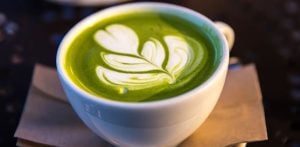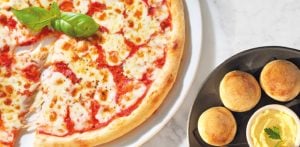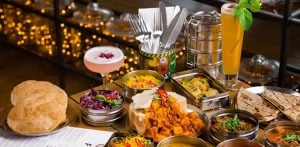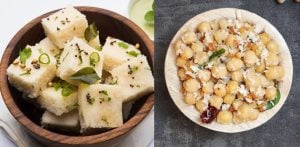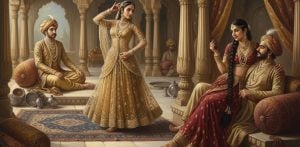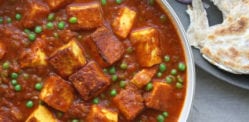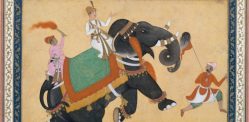milk was fermented using sour green leaves, berries and bark.
Paneer has been a much-loved ingredient in Desi cuisine for centuries. It is often a perfect go-to for vegetarians and is frequently used as a substitute for tofu.
Its use has expanded globally, now becoming popular in people’s everyday diets.
Unlike other cheeses, paneer is non-aged and non-melting, traditionally made from churned buffalo milk and a common fixture in South Asian cuisines.
With its dense texture and mild flavour, it is brilliantly paired with strong Desi spices, providing a balanced and exciting dish for all to enjoy.
But have you ever wondered how this much-loved ingredient came to be?
Despite being widely recognised as an Indian ingredient, the origin of this mildly flavoured ingredient is disputed.
Want to learn more about how this type of cheese came to become a Desi delicacy? Then let DESIblitz guide you through its long-disputed history.
Early Origins

The history of cheese in India goes back to the Indus Valley civilisation (around 2500 – 1700 BCE), recognised as the earliest known urban culture in the Indian subcontinent.
This was when milk was fermented using sour green leaves, berries and bark.
In his book, A Historical Dictionary of Indian Food, KT Achaya wrote that loose milk curds were combined with yoghurt and various spices to make sweets.
In India, the practice of milk curdling came alongside the domestication of the cow and people’s reliance on their milk for nourishment.
Thus dairy products like cheese, ghee, butter and curd became part of people’s diets.
However, after the arrival of the Aryan people from 1800 – 1500 BCE, who were Indo-Iranians hailing from what is now modern-day Afghanistan, the practice of curdling milk stopped.
Vedic Period

During the Vedic period, the art of cheesemaking was prohibited, causing the development of paneer in India to be halted. But why?
Cows were believed to be sacred during this period.
Therefore, tampering with their milk in any way was prohibited, especially souring or curdling it.
While mentions of other dairy products, like butter, ghee and curd remain in Hindu scriptures such as the Mahabharata, the memory of cheese faded.
So, from the start of the Vedic period, paneer was not a commonality in Indian cuisine.
It eventually returned to India but there are two common theories as to when paneer re-emerged after the Vedic period.
Afghan-Iranian Migration
The first theory is that this cheese’s re-emergence in India stemmed from Afghan-Iranian migration.
Persian and Afghan rulers in northern India brought about the method of cheesemaking in the 16th century using either goat or sheep’s milk.
Supporting this theory is the etymology of the word ‘paneer’, which derives from the Persian and Turkish word ‘peynir’ – directly translating to cheese.
Portuguese Influences
The second of these theories is that the Portuguese may have introduced the method of ‘breaking’ milk with acid in Bengal.
Modern-day paneer is made by curdling milk with citric acid.
Portuguese colonists, who settled in Calcutta during the early 17th century, brought their fresh cheeses (queso).
The Portuguese were then responsible for breaking the taboo of cheese curdling and reintroducing the cheese-making methods to India.
Therefore, the origins of cheese, in general, can be placed among the Afghan-Iranian migration, but the paneer we know today was refined from Portuguese methods of milk curdling.
Popularity during the Mughal Period

Paneer gained notable popularity during the Mughal period, a time when India’s culinary landscape experienced a blend of Persian, Central Asian, and Indian influences.
The Mughals were known for their extravagant feasts and intricate dishes, and paneer became a favoured ingredient in their kitchens.
It was used in rich curries, kebabs and desserts, often paired with luxurious ingredients like saffron, dry fruits, and aromatic spices.
Paneer’s versatility made it a natural choice for creating elaborate dishes that reflected the Mughal penchant for innovation in cuisine.
The royal chefs (khansamas) devised unique recipes that incorporated paneer, highlighting its ability to absorb flavours while maintaining its creamy texture.
This era laid the foundation for many of the paneer-based delicacies that remain popular in Indian cuisine today.
Paneer Variations

With the growing demand for paneer spreading worldwide, new production methods have emerged to make the product more readily accessible and to fit the needs of an array of consumers.
The most common and traditional form is chhena. This is when the cheese is still loose and remains in a state of unset curds separated from the whey.
While still in this form, chhena is mixed with sugar to make the much-loved Bengali sweet mishti.
Regions in India have their own variations of paneer.
Surti paneer, as the name suggests, hails from Surat in Gujarat. This form is left to age for three days in the whey when it is still in curds.
Bandel is another variety that comes from East India, where the cheese is shaped and dried.
New and emerging forms of paneer also include:
- Low-fat paneer
- Skim milk paneer
- Milk powdered paneer
- Soy paneer
- Filled paneer
- Paneer spreads
- Paneer pickles
- Fruit paneer
- Processed paneer
- Long-life paneer
No matter your dietary requirements, there are endless possibilities that could enhance your cooking.
How to Make Paneer

Ever wondered how to make paneer from scratch?
It is easy to make with just two traditional key elements.
Ingredients
- 2 litres of full-fat raw or pasteurised buffalo milk (goat or cow milk can also act as a substitute)
- 2 tbsp lemon juice (vinegar or citric acid can also act as a substitute)
Method
- Pour the raw buffalo milk into a deep pot and gently bring it to a boil.
- When the milk starts to boil, turn off the heat and add the lemon juice. Stir for 1 minute. The milk should begin to curdle and the solids will separate from the liquid. If no solids separate, add another tablespoon of lemon juice and turn the heat back on. Boil until you see the solids fully separate.
- As soon as you see the milk curdle, turn off the heat.
- Place a colander over a large bowl and cover with a muslin cloth. Transfer the curdled milk so that it sits in a muslin cloth.
- Rinse the paneer curds well.
- Squeeze the water out of the paneer, tie the muslin cloth and leave it to hang for 30 minutes. This will enable effective drainage.
- Keep the paneer in the muslin cloth and place it on a flat surface. Form a rounded shape by bundling it on the surface.
- Place a heavy object over the top of the paneer and leave for around 3 to 4 hours. This will allow the paneer to set.
- Remove the cloth and dice the paneer with a sharp knife. Your paneer is now ready to use or to refrigerate for later.
Its texture should be firm and crumble slightly. Its flavour should be mild but slightly tangy.
Due to its subtle aroma, this cheese can be the centrepiece in a variety of curries.
Particular spice pairings that work wonders with paneer are turmeric, cumin and coriander.
You can also serve paneer fried, baked or grilled, making it a very versatile food.
Paneer stands as a testament to the rich cultural and culinary exchanges that have shaped the Indian subcontinent over the centuries.
Its journey, from the Indus Valley Civilisation to the everyday tables of millions, highlights not just the adaptability of food but also its power to unify and inspire.
Paneer is more than just a versatile ingredient; it’s a symbol of tradition, innovation, and the timeless love for good food.
As it continues to evolve in global cuisines, the story of paneer reminds us of the enduring connection between our plates and our past.






